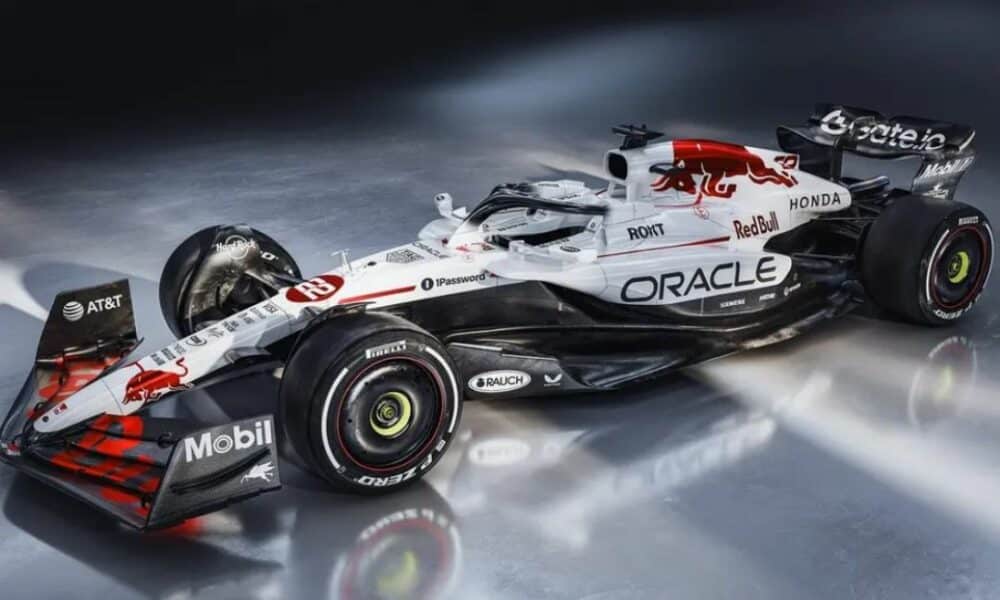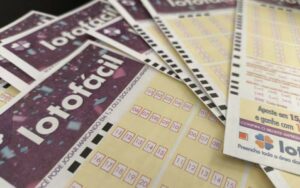Red Bull stunned Formula 1 fans on April 1 by unveiling a special livery for the Japan Grand Prix, set to take place at the iconic Suzuka circuit. The predominantly white design, accented with red details, pays homage to Honda, their long-standing partner, in what will be the Japanese manufacturer’s final home race before their seven-year collaboration ends. This choice celebrates not only the duo’s remarkable success—yielding four drivers’ world titles with Max Verstappen and two constructors’ championships since 2021—but also Honda’s rich motorsport heritage. As Honda prepares to supply engines to Aston Martin starting in 2026, and Red Bull shifts to producing its own power units with Ford, this weekend’s GP marks a symbolic turning point for both brands.
The reveal of the special livery has heightened anticipation for the Suzuka race. The circuit, owned by Honda, hosts the third round of the 2025 season, scheduled for April 4-6. Beyond its striking appearance, the weekend carries extra significance: Yuki Tsunoda, a Japanese driver backed by Honda, will make his debut for Red Bull’s main team alongside Verstappen. Meanwhile, Liam Lawson returns to the Racing Bulls squad, Red Bull’s sister team. The driver swap, confirmed the previous week, underscores Honda’s influence, reportedly bolstered by a substantial financial push to secure Tsunoda’s promotion for his home race.
The RB21’s white design isn’t just a visual statement—it carries deep cultural weight. In Japanese tradition, white symbolizes purity, simplicity, and respect, values mirrored in the nation’s motorsport ethos. Before sponsorships dominated car liveries, national colors defined racing teams, with Japan adopting white and red from its flag. This palette harkens back to the 1960s, when Honda entered Formula 1 and claimed its first win with the RA272, driven by Richie Ginther at the 1965 Mexico GP. Nearly six decades later, Red Bull draws on this legacy to honor a partnership that reshaped its Formula 1 journey.
🗣️ “This livery is a tribute to Honda’s success in #F1 and the final year of, what has been a thoroughly enjoyable partnership.”
Look back at our championship-winning journey with @HondaRacingGLB so far 📺
— Oracle Red Bull Racing | オラクル・レッドブルレーシング (@redbullracing) April 1, 2025
A Nod to Japanese Racing Roots
The decision to feature white prominently on the Red Bull car for the Japan GP is steeped in history. In motorsport’s early days, national colors distinguished racing cars before commercial logos took over. For Japan, white paired with red became a signature, reflecting the national flag. When Honda debuted in Formula 1 in 1964, it embraced this scheme, and the white RA272 with its red circle became iconic after securing Japan’s maiden F1 victory in 1965. That win laid the groundwork for a legacy that, decades later, fueled Honda’s triumphant run with Red Bull.
With the RB21 cloaked in white, Red Bull revives this classic look while spotlighting its bond with Honda at a pivotal moment. The Japanese manufacturer is in its final year powering Red Bull before teaming up with Aston Martin in 2026. The special livery, featuring Red Bull’s logo in red on the engine cover and subtle blue accents on the nose and rear, aims to resonate with Japanese fans and boost the partnership’s local impact. The unveiling aligns with the 60th anniversary of Honda’s first F1 win, lending even greater meaning to the tribute.
Suzuka’s Historical Significance
Suzuka, the Japan GP’s venue, is more than just a racetrack for Honda. Built in 1962 and designed by John Hugenholtz, the Honda-owned circuit is renowned for its demanding layout, featuring corners like the 130R and Spoon. Over the decades, it has hosted defining Formula 1 moments, including Ayrton Senna and Alain Prost’s legendary battles in the 1980s and 1990s. For Red Bull, racing there with a Honda-inspired livery acknowledges this storied past.
The track holds personal resonance for Yuki Tsunoda, who grew up dreaming of competing at Suzuka in Formula 1. His debut with Red Bull this weekend marks a career milestone, amplified by Honda’s exit as the team’s engine supplier. Tsunoda, after four seasons with Racing Bulls (formerly AlphaTauri), takes the RB21’s wheel following just two races for Liam Lawson in the top team, a switch reflecting both his steady performance and Honda’s push to see him shine at home.
A Partnership That Redefined F1
Red Bull and Honda’s collaboration kicked off in 2019, though it traces back to 2018 when Honda began supplying engines to Toro Rosso, Red Bull’s junior outfit. After a rocky stint with McLaren from 2015 to 2017, plagued by reliability and power issues, Honda found a willing partner in Red Bull. The alliance bore fruit quickly, with Verstappen securing a podium in their debut race together at the 2019 Australian GP. Their first win followed in Austria, cementing the partnership’s potential.
Over the next years, Honda honed its power unit, overcoming Mercedes’ hybrid-era dominance. The results were staggering: Verstappen clinched the drivers’ title in 2021, ending Mercedes’ seven-year streak, and repeated the feat in 2022, 2023, and 2024. Red Bull captured constructors’ titles in 2022 and 2023, amassing 66 grand prix wins to date. This haul underscores the synergy between Red Bull’s chassis expertise and Honda’s engine prowess, turning the team into a juggernaut—a far cry from its struggles with Renault engines in earlier years.
The partnership’s extension to 2025, despite Honda’s initial plan to exit after 2021, stemmed from the 2026 engine regulation overhaul. Honda scaled back its role but stayed on, while Red Bull launched Red Bull Powertrains with Ford. This phased transition maximized their joint success before the split, now celebrated in Suzuka with the unique livery.
Japan GP Schedule
The Japan Grand Prix is the third stop on the 2025 Formula 1 calendar, which spans 24 races. The season opened in March with the Australian GP, followed by China, and now heads to Suzuka before moving to Bahrain and Saudi Arabia. Here’s the weekend schedule in Suzuka, based on local time (GMT+9):
- Practice 1: April 4, 11:30 AM
- Practice 2: April 4, 3:00 PM
- Practice 3: April 5, 11:30 AM
- Qualifying: April 5, 3:00 PM
- Race: April 6, 2:00 PM
The event sticks to the standard format, without a sprint race, giving teams extra time to fine-tune setups for Suzuka’s challenges. For Red Bull, it’s a chance to assess the RB21 with Tsunoda and address early-season struggles noted by Verstappen and Lawson.
Driver Swap and Honda’s Influence
Yuki Tsunoda steps into Liam Lawson’s seat at Red Bull after just two races for the New Zealander in the main team. Announced on March 27, the move surprised many but reflects multiple dynamics. Lawson, who replaced Sergio Pérez at the end of 2024, failed to score points in Australia and China, exiting in Q1 each time. Verstappen, sitting second in the standings, has voiced frustrations with the RB21, calling it trickier to handle than Racing Bulls’ car.
Tsunoda’s promotion wasn’t solely performance-driven. Honda, bowing out as Red Bull’s engine supplier this year, played a key role. Reports suggest the manufacturer invested around $28 million to secure Tsunoda’s spot, capitalizing on the promotional value of a Japanese driver at Suzuka. With 47 points across four Racing Bulls seasons, Tsunoda brings reliability and experience, qualities Red Bull hopes will aid RB21 development. Lawson, meanwhile, rejoins Racing Bulls alongside Isack Hadjar to regroup.
The Livery’s Visual Impact
The RB21’s white livery will be a standout feature at Suzuka. Ditching Red Bull’s usual dark blue and yellow, in use since their 2005 F1 entry, the design echoes Honda’s heritage. It sports the team’s logo in red on the engine cover, with blue hints at the front and rear for contrast. This isn’t Red Bull’s first white livery nod to Honda—in 2021, the RB16B ran a similar look at the Turkish GP, originally planned for the canceled 2020 Japan GP.
For Japanese fans, seeing Red Bull’s car in national colors at Suzuka stirs pride, especially with Tsunoda driving. He’s already tested the RB21 in the simulator and will hit the track Friday. His goal is bold: a podium in his Red Bull debut, a feat that would cap Honda’s tenure with the team in historic fashion.
Facts About the Red Bull-Honda Era
The Red Bull-Honda partnership is more than stats and trophies. Here are some defining moments:
- Their first win came at the 2019 Austrian GP, just four races into the engine deal, with Verstappen.
- Honda reversed its 2020 F1 exit plan in 2021, swayed by Red Bull’s success and the 2026 rules.
- The 2021 RA621H engine powered Verstappen’s title, outpacing Mercedes in efficiency and grunt.
- Tsunoda is the first Japanese driver to race for Red Bull Racing, a Honda protégé from the start.
These milestones highlight how the alliance revived Honda’s F1 fortunes and propelled Red Bull to new heights.
Looking Beyond Suzuka
As the partnership nears its end, Red Bull gears up for 2026, debuting its own engines via Red Bull Powertrains with Ford. Launched in 2021 in Milton Keynes, this division marks the team’s first foray into in-house power units. Honda, meanwhile, will bring its know-how to Aston Martin, aiming to lift the British squad in the new regulatory era.
For Tsunoda, the Japan GP is a proving ground. His Red Bull deal runs through 2025, and a strong Suzuka showing could secure his future sans Honda’s direct backing. Verstappen, contracted through 2028, remains the team’s cornerstone but faces questions about staying amid RB21 woes as he chases a fifth title. He’ll lean on Tsunoda to share the load this season.
The Suzuka race transcends a mere championship round. It’s a visual and sporting salute to a game-changing partnership, a farewell to Honda as Red Bull’s engine maker, and a transition point for drivers and teams alike. The RB21’s white gleam under Japan’s sun will embody this chapter’s close—and its lasting imprint on the track.

Red Bull stunned Formula 1 fans on April 1 by unveiling a special livery for the Japan Grand Prix, set to take place at the iconic Suzuka circuit. The predominantly white design, accented with red details, pays homage to Honda, their long-standing partner, in what will be the Japanese manufacturer’s final home race before their seven-year collaboration ends. This choice celebrates not only the duo’s remarkable success—yielding four drivers’ world titles with Max Verstappen and two constructors’ championships since 2021—but also Honda’s rich motorsport heritage. As Honda prepares to supply engines to Aston Martin starting in 2026, and Red Bull shifts to producing its own power units with Ford, this weekend’s GP marks a symbolic turning point for both brands.
The reveal of the special livery has heightened anticipation for the Suzuka race. The circuit, owned by Honda, hosts the third round of the 2025 season, scheduled for April 4-6. Beyond its striking appearance, the weekend carries extra significance: Yuki Tsunoda, a Japanese driver backed by Honda, will make his debut for Red Bull’s main team alongside Verstappen. Meanwhile, Liam Lawson returns to the Racing Bulls squad, Red Bull’s sister team. The driver swap, confirmed the previous week, underscores Honda’s influence, reportedly bolstered by a substantial financial push to secure Tsunoda’s promotion for his home race.
The RB21’s white design isn’t just a visual statement—it carries deep cultural weight. In Japanese tradition, white symbolizes purity, simplicity, and respect, values mirrored in the nation’s motorsport ethos. Before sponsorships dominated car liveries, national colors defined racing teams, with Japan adopting white and red from its flag. This palette harkens back to the 1960s, when Honda entered Formula 1 and claimed its first win with the RA272, driven by Richie Ginther at the 1965 Mexico GP. Nearly six decades later, Red Bull draws on this legacy to honor a partnership that reshaped its Formula 1 journey.
🗣️ “This livery is a tribute to Honda’s success in #F1 and the final year of, what has been a thoroughly enjoyable partnership.”
Look back at our championship-winning journey with @HondaRacingGLB so far 📺
— Oracle Red Bull Racing | オラクル・レッドブルレーシング (@redbullracing) April 1, 2025
A Nod to Japanese Racing Roots
The decision to feature white prominently on the Red Bull car for the Japan GP is steeped in history. In motorsport’s early days, national colors distinguished racing cars before commercial logos took over. For Japan, white paired with red became a signature, reflecting the national flag. When Honda debuted in Formula 1 in 1964, it embraced this scheme, and the white RA272 with its red circle became iconic after securing Japan’s maiden F1 victory in 1965. That win laid the groundwork for a legacy that, decades later, fueled Honda’s triumphant run with Red Bull.
With the RB21 cloaked in white, Red Bull revives this classic look while spotlighting its bond with Honda at a pivotal moment. The Japanese manufacturer is in its final year powering Red Bull before teaming up with Aston Martin in 2026. The special livery, featuring Red Bull’s logo in red on the engine cover and subtle blue accents on the nose and rear, aims to resonate with Japanese fans and boost the partnership’s local impact. The unveiling aligns with the 60th anniversary of Honda’s first F1 win, lending even greater meaning to the tribute.
Suzuka’s Historical Significance
Suzuka, the Japan GP’s venue, is more than just a racetrack for Honda. Built in 1962 and designed by John Hugenholtz, the Honda-owned circuit is renowned for its demanding layout, featuring corners like the 130R and Spoon. Over the decades, it has hosted defining Formula 1 moments, including Ayrton Senna and Alain Prost’s legendary battles in the 1980s and 1990s. For Red Bull, racing there with a Honda-inspired livery acknowledges this storied past.
The track holds personal resonance for Yuki Tsunoda, who grew up dreaming of competing at Suzuka in Formula 1. His debut with Red Bull this weekend marks a career milestone, amplified by Honda’s exit as the team’s engine supplier. Tsunoda, after four seasons with Racing Bulls (formerly AlphaTauri), takes the RB21’s wheel following just two races for Liam Lawson in the top team, a switch reflecting both his steady performance and Honda’s push to see him shine at home.
A Partnership That Redefined F1
Red Bull and Honda’s collaboration kicked off in 2019, though it traces back to 2018 when Honda began supplying engines to Toro Rosso, Red Bull’s junior outfit. After a rocky stint with McLaren from 2015 to 2017, plagued by reliability and power issues, Honda found a willing partner in Red Bull. The alliance bore fruit quickly, with Verstappen securing a podium in their debut race together at the 2019 Australian GP. Their first win followed in Austria, cementing the partnership’s potential.
Over the next years, Honda honed its power unit, overcoming Mercedes’ hybrid-era dominance. The results were staggering: Verstappen clinched the drivers’ title in 2021, ending Mercedes’ seven-year streak, and repeated the feat in 2022, 2023, and 2024. Red Bull captured constructors’ titles in 2022 and 2023, amassing 66 grand prix wins to date. This haul underscores the synergy between Red Bull’s chassis expertise and Honda’s engine prowess, turning the team into a juggernaut—a far cry from its struggles with Renault engines in earlier years.
The partnership’s extension to 2025, despite Honda’s initial plan to exit after 2021, stemmed from the 2026 engine regulation overhaul. Honda scaled back its role but stayed on, while Red Bull launched Red Bull Powertrains with Ford. This phased transition maximized their joint success before the split, now celebrated in Suzuka with the unique livery.
Japan GP Schedule
The Japan Grand Prix is the third stop on the 2025 Formula 1 calendar, which spans 24 races. The season opened in March with the Australian GP, followed by China, and now heads to Suzuka before moving to Bahrain and Saudi Arabia. Here’s the weekend schedule in Suzuka, based on local time (GMT+9):
- Practice 1: April 4, 11:30 AM
- Practice 2: April 4, 3:00 PM
- Practice 3: April 5, 11:30 AM
- Qualifying: April 5, 3:00 PM
- Race: April 6, 2:00 PM
The event sticks to the standard format, without a sprint race, giving teams extra time to fine-tune setups for Suzuka’s challenges. For Red Bull, it’s a chance to assess the RB21 with Tsunoda and address early-season struggles noted by Verstappen and Lawson.
Driver Swap and Honda’s Influence
Yuki Tsunoda steps into Liam Lawson’s seat at Red Bull after just two races for the New Zealander in the main team. Announced on March 27, the move surprised many but reflects multiple dynamics. Lawson, who replaced Sergio Pérez at the end of 2024, failed to score points in Australia and China, exiting in Q1 each time. Verstappen, sitting second in the standings, has voiced frustrations with the RB21, calling it trickier to handle than Racing Bulls’ car.
Tsunoda’s promotion wasn’t solely performance-driven. Honda, bowing out as Red Bull’s engine supplier this year, played a key role. Reports suggest the manufacturer invested around $28 million to secure Tsunoda’s spot, capitalizing on the promotional value of a Japanese driver at Suzuka. With 47 points across four Racing Bulls seasons, Tsunoda brings reliability and experience, qualities Red Bull hopes will aid RB21 development. Lawson, meanwhile, rejoins Racing Bulls alongside Isack Hadjar to regroup.
The Livery’s Visual Impact
The RB21’s white livery will be a standout feature at Suzuka. Ditching Red Bull’s usual dark blue and yellow, in use since their 2005 F1 entry, the design echoes Honda’s heritage. It sports the team’s logo in red on the engine cover, with blue hints at the front and rear for contrast. This isn’t Red Bull’s first white livery nod to Honda—in 2021, the RB16B ran a similar look at the Turkish GP, originally planned for the canceled 2020 Japan GP.
For Japanese fans, seeing Red Bull’s car in national colors at Suzuka stirs pride, especially with Tsunoda driving. He’s already tested the RB21 in the simulator and will hit the track Friday. His goal is bold: a podium in his Red Bull debut, a feat that would cap Honda’s tenure with the team in historic fashion.
Facts About the Red Bull-Honda Era
The Red Bull-Honda partnership is more than stats and trophies. Here are some defining moments:
- Their first win came at the 2019 Austrian GP, just four races into the engine deal, with Verstappen.
- Honda reversed its 2020 F1 exit plan in 2021, swayed by Red Bull’s success and the 2026 rules.
- The 2021 RA621H engine powered Verstappen’s title, outpacing Mercedes in efficiency and grunt.
- Tsunoda is the first Japanese driver to race for Red Bull Racing, a Honda protégé from the start.
These milestones highlight how the alliance revived Honda’s F1 fortunes and propelled Red Bull to new heights.
Looking Beyond Suzuka
As the partnership nears its end, Red Bull gears up for 2026, debuting its own engines via Red Bull Powertrains with Ford. Launched in 2021 in Milton Keynes, this division marks the team’s first foray into in-house power units. Honda, meanwhile, will bring its know-how to Aston Martin, aiming to lift the British squad in the new regulatory era.
For Tsunoda, the Japan GP is a proving ground. His Red Bull deal runs through 2025, and a strong Suzuka showing could secure his future sans Honda’s direct backing. Verstappen, contracted through 2028, remains the team’s cornerstone but faces questions about staying amid RB21 woes as he chases a fifth title. He’ll lean on Tsunoda to share the load this season.
The Suzuka race transcends a mere championship round. It’s a visual and sporting salute to a game-changing partnership, a farewell to Honda as Red Bull’s engine maker, and a transition point for drivers and teams alike. The RB21’s white gleam under Japan’s sun will embody this chapter’s close—and its lasting imprint on the track.







